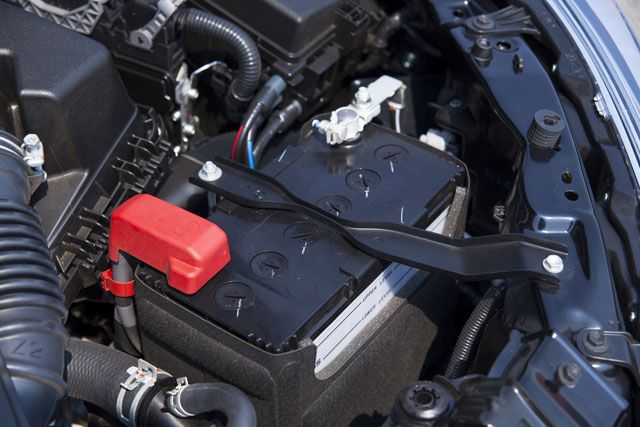There is nothing worse than being stranded on the side of the road with a dead car battery. Avoid this problem by checking these signs your car battery is dying.
For most drivers, one of their biggest fears during winter weather is the potential to get stuck in a storm. If you’re not paying attention to signs your car battery is dying or could give out, you’ll be more likely to suffer this problem. However, if you’re well prepared, you won’t have to worry about getting stranded.
Here are four tips to help you measure whether or not you’re likely to get stranded.
1) You Haven’t Changed Your Battery in a While:
While most cars require a battery to be changed every few years, some drivers don’t change their car’s battery for several years until one day it gives out. You need to know how old your battery is and the last time you changed it if you want to ensure you don’t end up stranded. You need to know how old your battery is so that you can replace it before it fails and ruins your whole day.
Some drivers keep their receipts for auto-related purchases that are more than a few dollars. Check out your glovebox for this information. If you have a new car, you have a better idea of how old your battery is than most other drivers on the road.
Some batteries have their date of manufacture on the battery. This offers a clue as to how old your battery is or when it’s meant to be replaced.
You’ll have to lift up your car’s hood and start digging around for the battery. Look for an easy to access plastic cover for your battery. Sometimes, there’s an easy to find a plastic sticker on the battery that tells you the date on it.
If there’s a hard to read plastic strip with a code on your battery, then you may have to look up the battery code to understand what it means. Without any identification, you’ll have to just look for signs of deterioration.
2) The Battery Might Let You Know:
If you turn the ignition key and find that your engine cranks kind of slowly, this is a sign that your battery is going to die. While the signs aren’t always this obvious, there are some visual and auditory ways to tell. For example, if your headlights look especially dim or are flickering a little bit, your battery might be telling you that it’s struggling to give steady power.
Listen to a car that sounds like it’s groaning or whining to stay alive. This is a surefire sign that you should check in on your battery.
Some batteries die without giving you any kind of warning. In these cases, your car isn’t even going to turn over, with your car just offering a clicking or a buzz as you turn your key. If this is the case, your battery is surely telling you it’s dead.
Check to see if there’s an obvious reason why your battery is dead. If you left your lights on overnight or kept an electrical device plugged in, you’ve probably drained it. After you get your car jumpstarted, it might run and be reliable.
However after you’ve drained your battery once, it’s not going to be as reliable as it was before. You’re better off replacing your battery as soon as possible.
3) You Haven’t Tested Your Battery:
If you’ve never tested your battery, it’s highly likely that you’re going to struggle to know how much life you have in your battery after a while. Thankfully, most auto parts stores and even your regular mechanic will be happy to test your battery for no charge at all. Even your AAA account entitles you to have someone test your battery and let you know whether or not it’s time to replace it.
Installing a new battery is fairly easy and most sellers are going to do that for free and dispose of your old one at little to no charge. While you could do this yourself, it’s not highly recommended if you don’t have expertise with cars and batteries.
When you work on a battery, you’re going to be touching a portion of a battery that might be corroded. This means that there are toxic elements of the battery that hare no longer housed inside of the battery and are now exposed to the elements. When you touch this corrosion, you risk poisoning yourself or burning your skin.
On top of all of that, batteries are fairly heavy. IF you have to remove your battery, it’s going to take some strength. Dropping a battery on your foot isn’t worth it and could be the end result of this feat.
4) You’re Not Maintaining It:
You can look at a battery and start to tell whether or not it’s in good shape. If you see chalky white or blue dust all around the top, that means that your connections are beginning to corrode and the inner elements are starting to leak. Once this starts, electrical conduction becomes difficult and your battery might quickly start to give out.
Clean off the terminals with a wire brush to get the corrosion off after you’ve removed it from your car. Before you reconnect the battery, put grease on the terminals to help keep it clear of corrosion and to help maintain conductivity.
Older batteries might allow you access to your cells. Adding distilled water helps to keep a charge, but this should only be done by a seasoned professional. If you’ve never so much as taken a look at your battery and you’re facing problems, it’s likely that it’s time to replace it.
Check out this useful post when you’re on the hunt for a high-quality replacement.
Pay Attention to Signs Your Car Battery Is Dying:
If you’re not paying attention to signs your car battery is dying, you’re going to regret it later on. Changing a battery is fairly straightforward, so if you feel like it’s time to do it, act on that instinct.
Before you take your next big trip, check out our guide for a checklist to keep you on the road.







